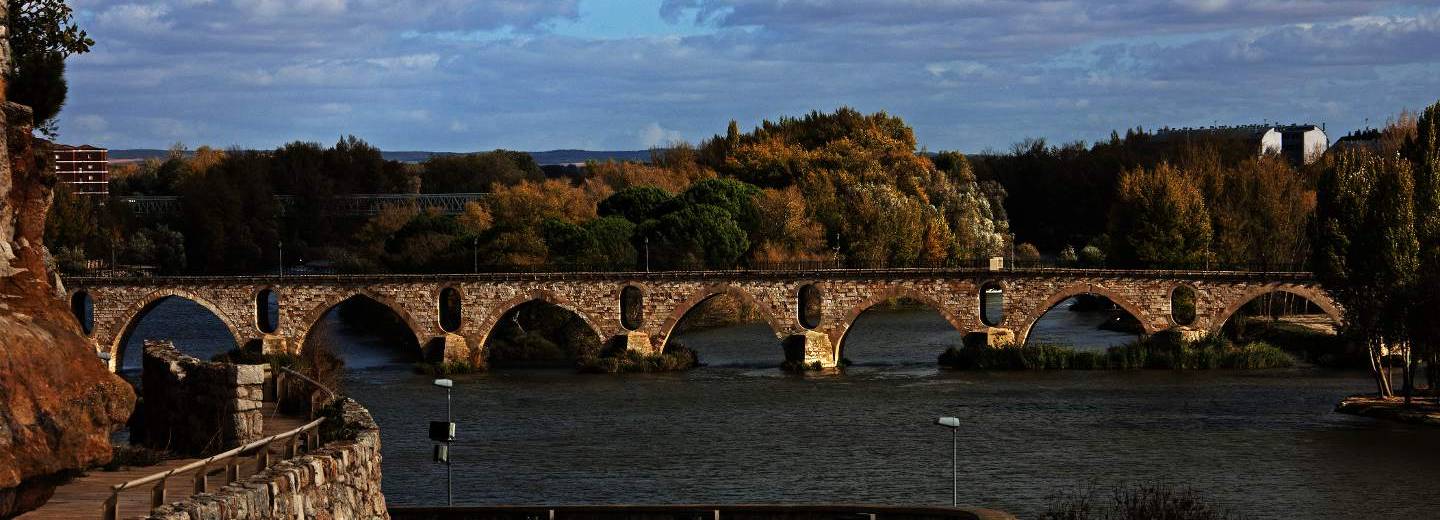Built in the 12th century
Stone Bridge of Zamora
It is one of the five bridges that cross the Douro river as it passes through Zamora. For centuries it was the only river crossing in the city, connecting the slums with the historic center of the city. As it was part of the Vía de la Plata, it was an important place of passage of the Douro River for people, merchandise and transhumant herds.It was finished building at the beginning of the 13th century and later reformed. It constitutes one of the symbols of the city.
Formed by sixteen pointed arches that cross one of the widest areas of the Douro as it passes through Zamora. Originally it was crenelated and had two large defensive towers at the ends, being an extension of the wall of the third enclosure that reached there. It also had an attached chapel on the left side dedicated to the Virgen de la Guía, patron saint of walkers, which today is found in the Church of the Holy Sepulcher. These elements were removed in the early 20th century to facilitate vehicle access.
Today the bridge is pedestrian, not allowing vehicles to pass.
Historical Data
- Architecture:
- Civil engineering
- Construction:
- Bridge
- Predominant styles:
- Romanesque
- Historical Period:
- Middle Ages
Address
Puente de Piedra. Zamora. 49028 Zamora.
More information
Tourist Office of Zamora
Plaza Arias Gonzalo, 6. Zamora. 49001 Zamora.
Telephone: 980 533 694
Fax: 980 533 694
Email: oficinaturismo@zamora.es
Website: https://turismo-zamora.com/
Tourist Office Regional of Zamora
Avda. Principe de Asturias, 1. Zamora. 49012 Zamora.
Telephone: 980 531 845
Email: oficinadeturismodezamora@jcyl.es
Website: http://www.turismocastillayleon.com














